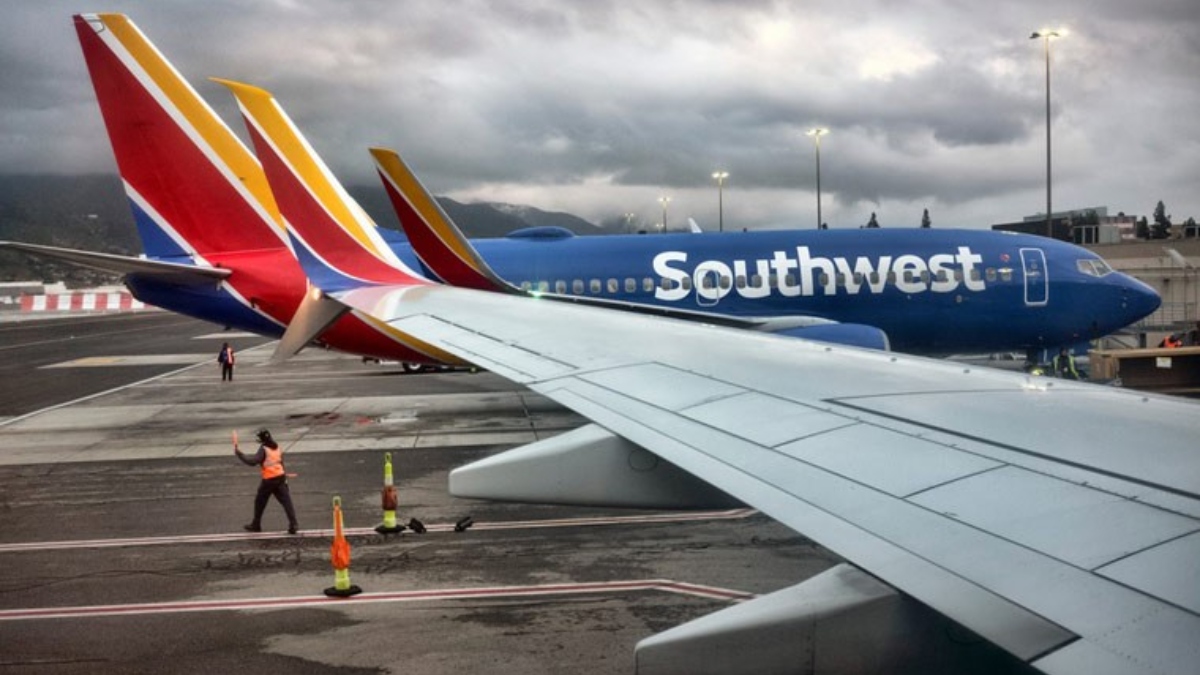What Burbank Southwest flight's pilot told fliers after avoiding collision with Hawker Hunter aircraft
 [FILE] Image of a Southwest aircraft used for representation
[FILE] Image of a Southwest aircraft used for representation
A Southwest passenger plane nosedived 300ft in just 36 seconds shortly after take-off to avoid a mid-air collision on Friday in California. Southwest flight 1496 from Burbank, California to Las Vegas, Nevada was reportedly in the vicinity of a Hawker Hunter Mk. 58, a British fighter jet. The Federal Aviation Administration is investigating the incident.
After the pilot of the Boeing 737 was forced to descend, at least two cabin crew members were hurt, while a passenger who did not have her seatbelt buckled was thrown out of her seat, US media reports said. Adults and minor alike screamed and one of the crew was in a state of daze after his head was hit. One of his colleagues screamed that he was quittung, reports quoted passengers are remembering.
"Pilot had to dive aggressively to avoid mid-air collision over Burbank airport. Myself & plenty of people flew out of their seats & bumped heads on ceiling, a flight attendant needed medical attention," comedian Jimmy Dore, who was among the passengers of Southwest flight 1496, said on X.
It was the pilot himself who told the passengers what had happened following the dramatic loss of altitude for a few seconds.
He used the intercom to reveal that they had lost the air traffic control signal and he had to bring the aircraft to a lower elevation as they almost collided with another plane.
The flight later landed in California without further incident, reports said.
"Southwest is engaged with the Federal Aviation Administration (FAA) to further understand the circumstances...We appreciate the professionalism of our Flight Crew and Flight Attendants in responding to this event. Nothing is more important to Southwest than the Safety of our Customers and Employees," an official statement by the airline read.
What are Hawker Hunter jets?
Mk-58 Hawker Hunters are British jet-powered fighter aircraft that was developed by Hawker Aircraft for the Royal Air Force (RAF) during the late 1940s and retired from active service in the early 1990s. However, the RAF and NATO countries still use these iconic jets for a variety of reasons:
- The Royal Air Force (RAF) retired Hawker Hunter jets from primary service in the early 1990s.
- However, the Hawker Hunter still has a role with the RAF through contractor companies.
- Hawker Hunter Aviation (HHA) operates a fleet of retired Hawker Hunters\
- HHA provides the jets to RAF and other NATO partners for purposes like air combat training, Joint Tactical Air Controller (JTAC) training and trials.
- These contracted Hunters are often upgraded with modern avionics.
- Their reliable performance has made them a cost-effective way to provide realistic training without using more expensive modern fighter jets.
World